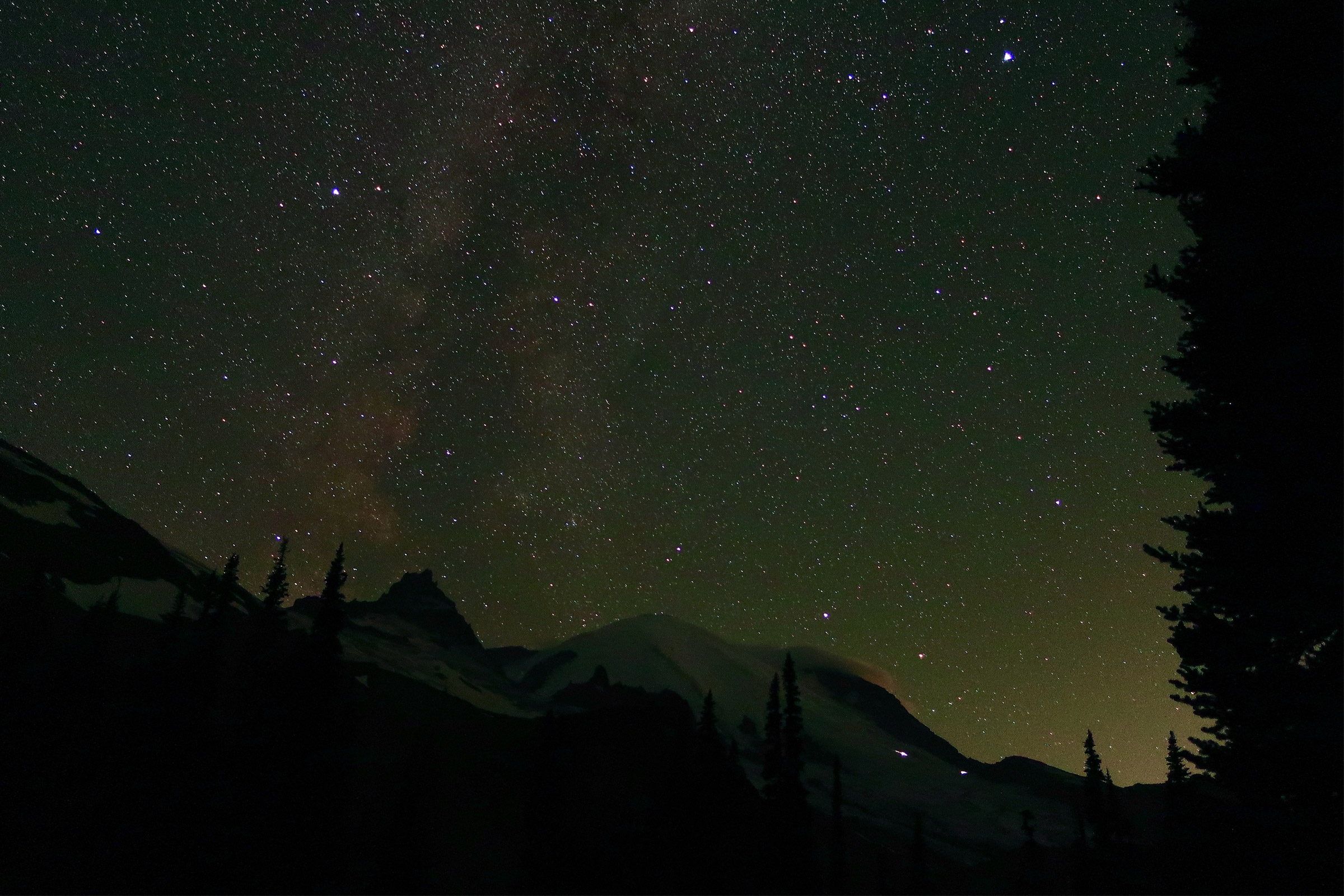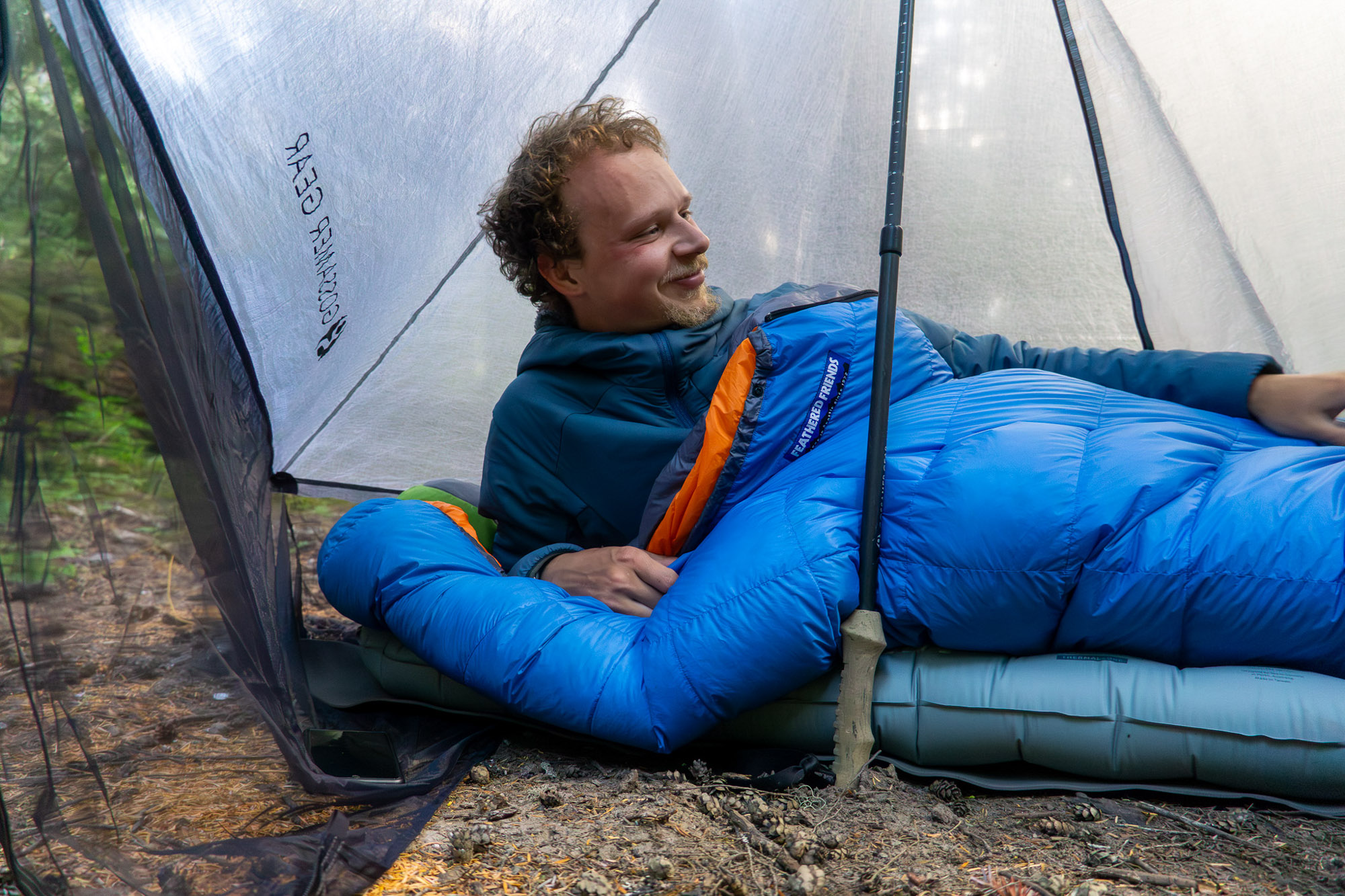Nothing beats backpacking in a National Park, but it requires planning and permit applications. Here’s a short list of our favorite backpacking itineraries, with tips and permitting info for each.
My first big backpacking trip was the Appalachian Trail in 2018. I didn’t complete the thru-hike, but I did learn that I loved backpacking. I’ve since visited 48 National Parks and backpacked in 23 of them with my boyfriend.
Of those, the following are my top five favorite backpacking trips in the U.S. I focused on National Parks in the lower 48 states, as I’ve yet to visit Hawaii or Alaska (though I bet backpacking in Haleakalā and Denali National Park would easily make this list).
That said, these trips cover some of the most iconic landscapes the U.S. has to offer.
For each route, I’ve outlined an itinerary with mileage that you can follow verbatim. Or, you can make it your own, adding to, subtracting from, or changing whatever you like.
I’ve also included permitting info for each area, and useful tips for prospective trekkers.
5 Iconic Backpacking Trips in US National Parks
1. Rae Lakes Loop in Kings Canyon National Park, California

This 41.1-mile loop climbs 6,943 feet (2,116 m) from the trailhead to the top of Glen Pass. People say it’s one of the most scenic parts of the John Muir Trail and the Pacific Crest Trail.
So, get your hands on a permit as soon as they’re available. They get scooped up fast.
Example Itinerary
- Day 1: Bubbs Creek Trailhead to Junction Meadow
- Day 2: To just North of Glen Pass/Rae Lakes
- Day 3: To Middle Rae Lake (use this mostly as a rest day at the lakes — it’s unnecessary but highly recommended)
- Day 4: To Castle Domes Meadow, or Paradise Valley as an alternative
- Day 5: To Roads End Parking Lot
- Total mileage: 41.4 mi. (66.6 km)
- My trip date: Late June 2021
Permit Information
- Between the end of May to mid-September, you’ll need a permit.
- You can make a reservation 6 months to one week before your desired trip date on Recreation.gov.
- Fee: Wilderness permits cost $15 for each trip plus $5 per person within the quota season.
Tip: Know that the clockwise route trailhead is Wood’s Creek. The counterclockwise route trailhead is Bubbs Creek. We went counterclockwise.
2. Tuolumne Valley to Yosemite Valley in Yosemite National Park, California

This 57.2-mile backpacking route covers the most incredible viewpoints in the “crown jewel” of the National Parks, from Clouds Rest and Half Dome to Vernal Falls and Nevada Falls.
This backpacking route is one-way, heading down into the valley of the National Park. So you’ll need to schedule a shuttle or plan to use two vehicles to get back up to Tuolumne Meadows.
Example Itinerary
- Day 1: Cathedral Lakes Trailhead to Upper Cathedral Lake
- Day 2: To Sunrise Lakes
- Day 3: To Little Yosemite Valley via Clouds Rest
- Day 4: To Half Dome — stay at Little Yosemite Valley for a second night
- Day 5: To Yosemite Valley via the Mist Trail
- Total mileage: 57.2 mi. (92 km)
- My trip date: Mid-July 2019
Permit Information
- You will always need a permit for any overnight stay in Yosemite National Park.
- Reservations are by lottery 24 weeks in advance on Recreation.gov.
- You can also check 22 weeks in advance and 7 days in advance.
- Hiking Half Dome is a separate permit you can add onto your trip for an additional $10 per person. They check your permit at the base of Half Dome, so don’t go without one. Remember to bring gloves for the cables.
- Fee: $10 to enter the lottery, $5 per person when your reservation is confirmed
Tip: Here’s a gear list from a Yosemite guide!
3. South Kaibab to Bright Angel or Rim to Rim, Arizona

Since visiting the Grand Canyon National Park back in 2016 and hearing that my dad stayed at Phantom Ranch with his park ranger friend and others, I’ve always wanted to experience the canyon from below. In 2021, we made it happen.
Backpacking from the South Kaibab Trailhead to the Bright Angel Trailhead is a point-to-point 17.6-mile route. It descends 4,400 feet down one side and ascends 4,460 feet back up to a different location on the same rim.
Example Itinerary
- Day 1: South Kaibab Trailhead to Bright Angel Campground
- Day 2: To Indian Garden Campground
- Day 3: To Bright Angel Trailhead — take the free shuttle back to your car
- Total mileage: 17.6 mi. (28 km)
- My trip date: Mid-April 2021
The recommended route hiking Rim to Rim is North Kaibab Trail to Bright Angel, which is 24 miles one way, 14.4 miles down to the river, and 9.6 miles up to the South Rim.
Permit Information
- You will always need a permit for any overnight stay in the park outside of Mather, Desert View, and North Rim Campground.
- Apply for a permit during the earliest consideration time frame.
- Fee: As of 2022, it is $10/permit + $12 per person/night
4. Wonderland Trail in Mount Rainier National Park, Washington

This 93-mile loop with over 23,000 feet of elevation change is still on my bucket list. We’ve been denied a backpacking permit twice to this National Park. But we’ve been fortunate enough to hike multiple sections of this trail over many visits. (Note: One of GearJunkie’s senior editors has also hiked the Wonderland Trail and highly recommends it.)
One of my favorite days was starting at Nickel Creek, seeing bears by Indian Bar, and then seeing mountain goats at the top of the Panhandle Gap, the highest point on the Wonderland Trail. Then we watched the sunset over Mount Rainier from Summerland.
The average time for completing this backpacking loop is around 8 days, so here is a recommended route. (Wonderland Guides is helpful for planning your customized itinerary.)
Example Itinerary
- Day 1: Longmire Trailhead to South Puyallup River
- Day 2: To Golden Lakes
- Day 3: To Mowich Lake
- Day 4: To Dick Creek
- Day 5: To Sunrise Camp
- Day 6: To Summerland
- Day 7: To Nickel Creek
- Day 8: To Longmire Trailhead
- Total mileage: 93 mi. (150 km)
Permit Information
- You will always need a permit for any overnight stay in the backcountry in Mount Rainier National Park.
- You will also need a permit for climbing trips around 10,000 feet or on glaciers.
- The early access lottery application starts late February (February 21, 2022) at 7 a.m. PT on Recreation.gov.
- Fee: $6 lottery application fee and $20 for every permit reservation made in advance.
5. Paintbrush Canyon to Cascade Canyon Loop in Grand Teton National Park, Wyoming

There are so many incredible backpacking trips in Grand Teton National Park. The Grand Teton Loop Trail is 34.3 miles, and the Teton Crest Trail is 25.7 miles from point to point.
But the backpacking trip we got permits for was Paintbrush Canyon — Cascade Canyon Loop. This 19.7-mile loop goes up Paintbrush Canyon to the divide, past Lake Solitude, over to Cascade Canyon, and down to Jenny Lake.
You can make it a 3-day backpacking trip, with some extra time at Holly Lake. Or, push it a little faster and shorten it to 2 days if you’re crunched for time.
Either way, the recommended route is counterclockwise.
Example Itinerary
- Day 1: String Lake Trailhead to Holly Lake (Upper Paintbrush)
- Day 2: To North Fork Cascade Zone
- Day 3: To String Lake
Or
- Day 1: String Lake Trailhead to North Fork Cascade Zone
- Day 2: To String Lake Trailhead
- Total mileage: 19.7 mi. (31.7 km)
- My trip date: Early September 2021
Unfortunately, we had the permits for the loop but could not complete it due to sickness. We stayed one night at Leigh Lake and one night at Holly Lake before reluctantly returning.
We planned to stay another night at South Fork Cascade, hike to Hurricane Pass, and hike back down Cascade Canyon. We’ve hiked Cascade Canyon already in the past, but I want to return to see the upper sections, too.
Tip: Here’s a recommended gear list for the Teton Crest Trail.
Permit Information
- You will always need a permit for any overnight stay in the Grand Teton National Park backcountry.
- Advanced permit reservations open at 8 a.m. MT on January 10, 2023, for trips between May 1 and October 31. Apply online at recreation.gov.
- From May 16 to December 31, permits are only available in person on a first-come-first-serve basis.
- Fee: $45 nonrefundable fee for each permit reserved; $35 nonrefundable fee for each walkup permit.
Bonus Trip 6. Sahale Glacier in North Cascades National Park, Washington

This 12.1-mile out-and-back trail climbs up 5,029 feet to Sahale Glacier. It’s a perfect 2-day, one-night backpacking trip in this National Park.
Cascade Pass is a popular day hike, but once you pass that rest area, the number of people drops. The trail climbs even more with spectacular views of the surrounding mountains and Doubtful Lake.
Bring a freestanding tent because the tent pads are all rock. We were fortunate enough to stay on the night of the Perseid meteor shower and I experienced 33 shooting stars before I fell asleep. It was pure magic.
Example Itinerary
- Day 1: Cascade Pass to Sahale Glacier
- Day 2: Back to Cascade Pass
- Total mileage: 12.1 miles, 19 km
- My trip date: Mid-August 2021
Permit Information
- You will always need a permit for any overnight stay in the North Cascades National Park backcountry.
- Use recreation.gov to apply for your permit.
- In 2022, the early access lottery applications became available on March 3 at 7 a.m. PT.
- Fee: $6 lottery application fee and $20 for every reservation (including walkup).
Tips for Getting the Permit
- Sign in to the recreation.gov website.
- These will disappear fast. So set your alarm before the permit becomes available. Know the exact time to the seconds and refresh the page when the permits are available.
- Know the exact trailhead you need. The trailhead is not always the same name as the route because routes usually follow a series of trails. (For example, on the Wonderland Trail, there are actually three different trailhead starting points.)
- Have a backup itinerary planned. Be flexible about trailheads.
General Permit Info
Walkup backpacking permits for National Parks are something to keep in mind if you can be flexible with your schedule. In recent years, this process has changed for some parks, so we recommend checking ahead of time if possible.
We reserved as many permits as we could in advance and managed to get walkup permits for plenty of other trips. We’re fortunate that we’ve got the flexibility of living on the road, and realize that may not be a possibility for everyone.
Rangers are very helpful in making your trip work, so don’t hesitate to ask for advice or help planning.
We’ve also been denied permits. We’ve applied for the Glacier National Park lottery a few times and have never gotten it, but I have hope for the future. Don’t let that stop you! Just keep on applying — eventually, something’s got to give.
Happy planning and happy trails!








